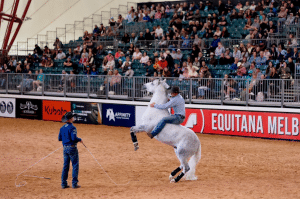Presented by Amanda Edwards:
Learn The Language of Horse Pain
Did you know that 47% of horse owners did not recognise pain in their horses?
This was one of the findings of research into lameness and pain assessment during a study of 546 horses. I don’t know about you but I find that a bit mind-blowing.
Recognising signs of pain in horses is a skill that every horse owner should have but doesn’t know they need. That’s because horses are pretty good at hiding their pain.
We recorded a webinar called Learning the language of pain in horse where I delve into a recent review of 4 validated scales designed to measure pain in horses. Follow the steps below to access the recording. I think you will love it.
Go to www.equineecare.com. Scroll down the home page and enter your name and email for instant access to the recording
Overview
These are the 4 ‘’validated’’ pain scoring methods, specifically highlighting the Composite Pain Scale (CPS). (A validated scale is one that can be repeated by others and elicits consistent responses.)
This scale was found to be the most easily understood and reliable scale of the four although each of them had merit.
The Composite Pain Scale is probably the most useful scale for horse owners in their day to day care of horses.
Components of the CPS:
The Composite Pain Scale comprehensively evaluates a horse’s condition by considering multiple factors:
Pain Face: The pain faces include grimacing, muscle tightness around the eyes and nostrils. This is the area people find more difficult to observe and require some explanation, support and practice.
Activity Levels: This measure explores whether the horse is engaged or not with surroundings.
Location in stable/paddock: with others or alone, facing towards or away from doorways/gates etc (some variability with paddocked horses as the observer needs to make some adjustments)
Posture: How is the horse standing or shifting balance?
Attention to area: where is the horse’s attention. Is he paying attention to the area of pain or not?
Interaction: Will the horse interact with the observer or not?
Head position: Head high, low or neutral?
Response to food: Is the horse interested in food offered or not?
Breathing: is the rate of breathing above 20 breaths per minute at rest?
Heart rate: is the heart rate above 40?
While other pain scales have their merits, the Composite Pain Scale is most practical for horse owners and stands out for its reliability and ease of application.
Every horse owner should be able to quickly and accurately assess their horse’s pain levels to enable prompt intervention and care.



